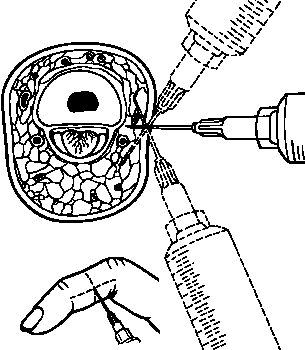
agk’s Library of Common Simple Emergencies
It is necessary to provide complete anesthesia when treating most fingertip injuries. Many techniques for performing a digital nerve block have been described. The following is one that is both effective and rapid in onset. This type of digital block will only provide anesthesia distal to the distal interphalangeal joint, but this is most often the site that demands a nerve block.
Digital nerve blocks are often described as being injected at the base of the proximal phalynx, but it is not necessary to block the whole digit when only the distal tip is injured, and the first technique above provides anesthesia much faster. Toes are difficult to separate and it may be easier to perform a modified ring block at the base. Over the dorsum of the proximal interphalyngeal joint the connective tissue is loose enough for direct injection of anesthetic, and a digital block is not required. Some studies have demonstrated digital anesthesia by injecting 2 mL of buffered lidocaine directly into the flexor tendon sheath, using a 25 or 27 gauge needle at a 45 degree angle at the distal palmar crease.

----------------------------------------------------- from Buttaravoli & Stair: COMMON SIMPLE EMERGENCIES © Longwood Information LLC 4822 Quebec St NW Washington DC 20016-3229 1.202.237.0971 fax 1.202.244.8393 electra@clark.net -----------------------------------------------------
agk’s Library of Common Simple Emergencies is hosted on sdf